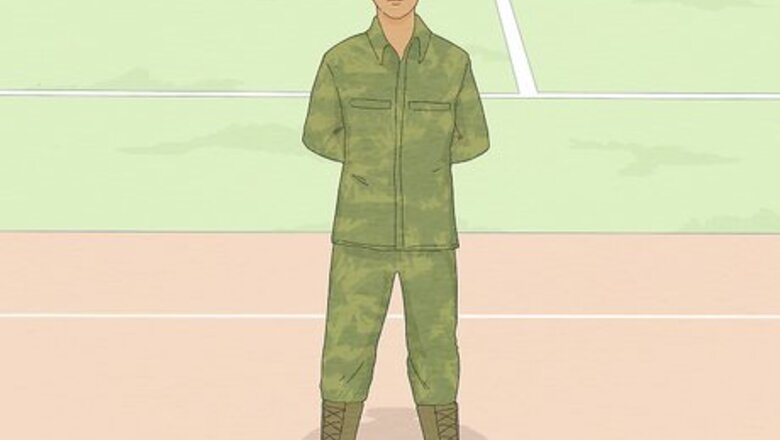
views
Performing the Hand Salute
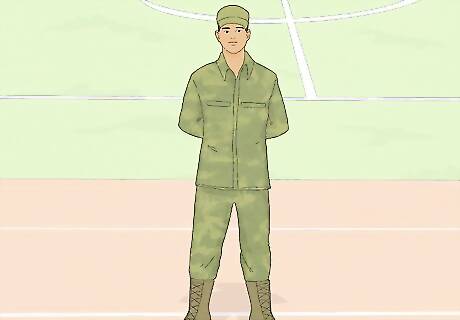
Stand up straight. Use your best posture when saluting. Don't hunch over or let your shoulders droop. Stand with your arms straight and flat at your side and fingers pointed at the ground.

Face the flag or person you are saluting. Turn your head and eyes toward the person or flag you are saluting. If you are saluting a person, it is respectful to maintain eye contact. The person of lower rank should initiate the salute. By initiating the salute, the officer is not implying he is in anyway inferior to the superior. It is just a showing of respect and camaraderie.

Bring your right arm up to the correct position. Bring your arm up so the bottom of your bicep is parallel to the ground. Your arm should remain straight, so your elbow is in a straight line with your shoulders. A well-executed salute is a crisp, singular movement. Once you use a salute on a daily basis, it will become reflexive.
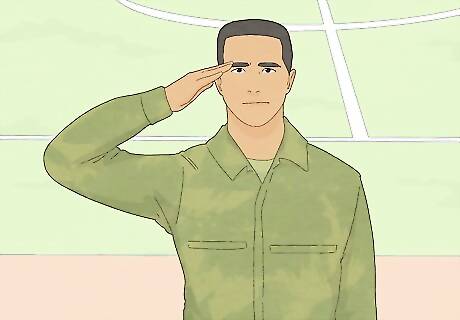
Raise your hand up to your brow. Keep the outer edge of the hand barely canted downward so that neither the back of the hand nor the palm is clearly visible from the front. The hand and wrist are straight, the elbow inclined slightly forward, and the forearm is at a 45-degree angle to the ground. Keep your fingers and thumb straight and in line with each other.
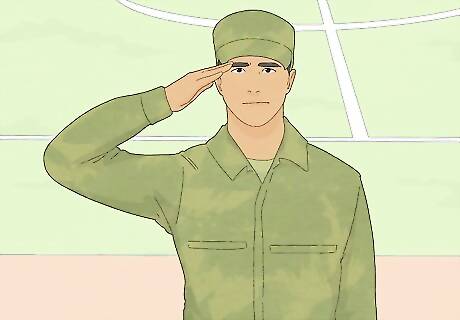
Modify the salute as appropriate for the headgear you are wearing. While the basic steps of the salute are quite similar, there are some small adaptations that you should make depending upon whether you are wearing headgear or glasses. When wearing headgear with a visor (with or without glasses): At the command "arms," you will salute with your right hand, touching the tip of your index finger to the rim of the visor, slightly above your right eye. If you are not wearing glasses and are wearing no headgear, or headgear without a visor, you will use the same precise movements, only you will touch your finger to the forehead, beside the outer edge of your right eyebrow. When wearing glasses, with no headgear or headgear without a visor: This time, you will touch the tip of your right forefinger to your glasses. Touch the part of the frame where the temple piece of the frame meets the right edge of the right brow.
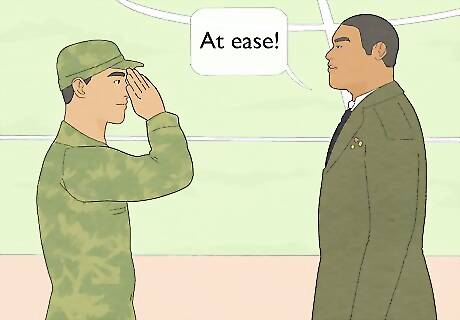
Hold the salute. You should hold the salute until the commanding officer gives the "At ease" order. During the National Anthem or other appropriate songs, you should hold the salute until the last note.
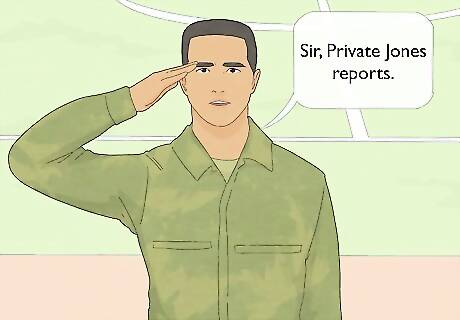
Accompany the salute with an appropriate greeting. Saying "Good morning, Sir," or something along those lines is encouraged when you salute a superior. Perform the salute, then greet the soldier while holding the salute. If you are reporting to the officer, you should identify yourself and state that you are reporting. For example, "Sir, Private Jones reports."
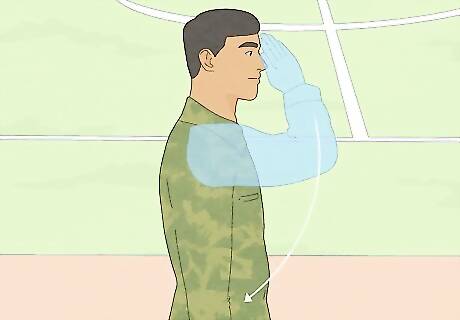
Lower your hand. Bring your hand directly down to its natural position at your side when dropping the salute. Do not slap your leg or move your hand out to the side. Any flourish in the salute is improper. If you perform a salute that is at all showy or lazy, it can be perceived as being a greater insult than not performing a salute at all.
Saluting When Appropriate
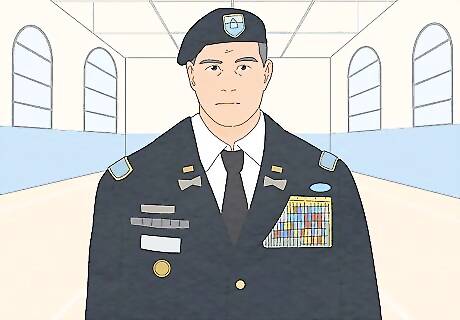
Recognize the appropriate personnel by saluting. It is important to know who you are required or expected to salute. Always salute the President of the United States. Perform a salute to any commissioned and warrant officers. Salute all Medal of Honor recipients, regardless of rank. Salute officers of friendly foreign nations.
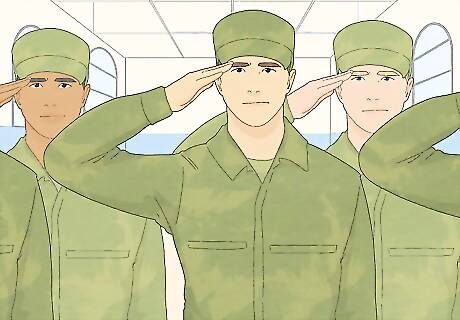
Perform a salute during appropriate events. Perform a salute during the National Anthem. You should also salute during renditions of "To the Color," "Hail to the Chief," or other foreign national anthems are played. To an unfurled national flag outdoors. Perform a salute when the flag is about six feet away, and hold the salute until the flag is six feet past you. Salute during appropriate ceremonies. This includes military funerals, change of command ceremonies, and reveille and retreat ceremonies when the flag is raised and lowered. Perform a salute during the sounding of honors. Salute during the Pledge of Allegiance. Salute when rendering reports. When you see officers in official vehicles.
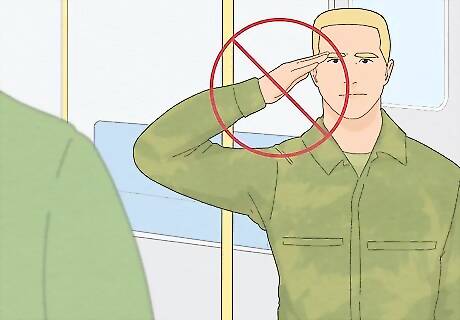
Do not perform a salute when it is not practical or against regulations. Do not salute indoors unless reporting to a superior officer. Do not salute when your hands are occupied or it is impractical to salute. In such instances, a greeting can be used in place of the salute. Do not salute when operating a moving vehicle. Use good judgment in public areas. Salutes are unnecessary if you encounter a superior officer on a train or at a bus station. Soldiers on a work detail or playing a game should not stop their activity to perform a salute. Do not salute an NCO (non-commissioned officer).
Learning Variations
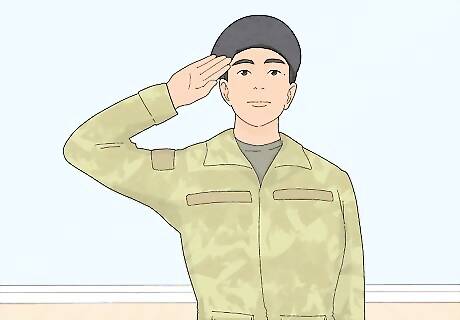
Salute British soldiers with your palm facing away from your body. The hand should almost be touching the hat brim. British army and air force soldier perform this solute, however, the navy salutes with the palm turned down at a 90-degree angle.

Use a two-fingered salute to recognize Polish military. Polish military perform a salute identical to the more common hand salute, however, the ring and pinky fingers are not extended.
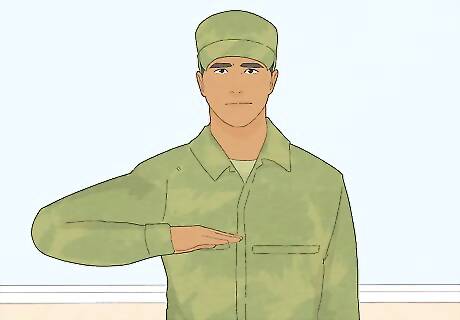
Use a Zogist Salute to recognize Albanian troops. This gesture is also used to salute flags in Mexico and parts of Latin America. The Zogist Salute is performed by extending the arm in front of the body and bringing the hand to the chest in a chopping motion. The hand is held against the chest with the palm facing down and parallel to the ground.


















Comments
0 comment